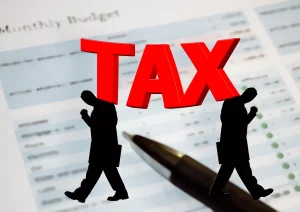
Ways to Measure Your CSR Performance - CSR Reporters

Measuring CSR effectiveness is something that can be done in many different ways. It’s an exceptionally valuable tool for your business to grasp in order to keep up with the fast-moving corporate world. If your CSR efforts are underperforming it can affect decision making and may lead to a lowered brand value if left untreated. While key performance indicators of a successful CSR strategy can positively impact communities, climate change, and your brand value, it is foolish to overlook impact valuation and the measurement of CSR ROI within your company.
Why Measure CSR?
As a consequence of the increasing importance of ethical consumerism, it’s obvious that measuring CSR effectiveness is not as clear-cut as we may like it to be. In order to check that your CSR ROI is where it should be, you must complete a CSR assessment.
A proper CSR assessment must consider the following:
- How well the social responsibility movements have been integrated into the daily routine of the company
- Which theme your CSR campaign is tackling (environment, labor & human rights, ethics, or sustainable procurement)- and how it is doing so. If it’s all of them, how you are committing to each.
- Legal requirements where applicable.
- A definition of what CSR is to your company.
- The engagement of stakeholders.
A CSR assessment helps to identify the benefits that you are reaping from your efforts. It also helps to show you any shortfallings you may suffer from an ineffective CSR campaign. CSR metrics and social return are a big factor in business strategy, and can seriously impact the public opinion of your company- in both positive and negative ways.
In short: your CSR assessment is an extremely necessary part of any CSR project.
How to Measure CSR Effectiveness
As has been established, corporate social responsibility is linked to success when used at the center of a business model. However important it is to have CSR as an intrinsic part of a business, it is equally important to ensure that the investments you make into your CSR efforts are financially viable. As such, measuring your CSR efforts is a crucial aspect of the practice.
What to Measure
The best way to keep track and measure your CSR efforts is to consider ESG (Environment, Social, and Governance). These three tangible objective metrics represent a triple bottom line that corporations use in self-evaluation. Investors and consumers can also use these figures to measure a company’s impact.
Let’s break these down a little more:
Environmental
Companies should evaluate their environmental impact, and consider whether they are negatively impacting or polluting the planet. This could be through their supply train, their product delivery system, or the product itself. If a company concludes that they are producing negative impacts on the environment, they must take action to mitigate or remedy said impacts.
Social
Social CSR shows that companies should pay their workers a reasonable equitable wage, as well as offering a positive impact on their wider community. This could be through charitable donations, community service, or any other myriad of opportunities.
Governance
Governance refers to internal management. It asks that companies have appropriate incentives for management, as well as processes in place to assure that the stakeholders of the company are well respected and represented fairly and equitably during business meetings, decisions and processes.
How to Measure CSR
So, now we have covered what you need to be measuring, let us discuss some of the best ways of how to measure them.
1. Set Sustainable Development Goals (SDGs) to Achieve Benchmarks
In 2015, United Nations member states adopted sustainable development goals (SDGs- also known as Global Goals) as a universal call to action to end poverty, protect the planet, and ensure that by 2030, all people across the planet can enjoy peace and prosperity.
The SDGs provide a unique opportunity to elevate communication on sustainability. Governments have emphasized this agenda through SDG 12 — recognizing how important it is for companies to adopt sustainable practices and integrate this information into their reporting cycles. The expectations on companies are huge. Companies that align reporting and communication with the SDGs will be speaking in the same language that increasingly is adopted by governments, foundations, NGOs and even investors.
These goals are useful benchmarks for your company, and can be used to help guide your CSR initiative as it develops, as well as the way in which you communicate your CSR goals. When you are communicating or executing your goals and achievements, be it via video, programs, or other initiatives- even if this particular piece of work is focused on one of your achievements, be sure to keep your other SDGs in mind, and monitor how your company is contributing to them.
2. Set Relevant KPIs
It is very difficult to truly measure the effectiveness of a CSR campaign without setting goals (KPIs), calculating value, and tracking results. To set your goals, consider what you wish your long-term goal to be, and set several smaller goals that will help you along the way.
For example, if you want to reduce the number of homeless people in your city, you can set several smaller goals along the way to the larger goal. Things like resume workshops, food drives, counseling and coaching sessions, and free dry cleaning for interviews. These goals can steadily build into back-to-work programs, subsidized rent, and improved policies within the local government, helping to stop people from becoming homeless in the first place.
3. Compare yourself to Industry Leaders
In the corporate world of CSR, there are many leaders who you can look to for inspiration. Long gone are the days we can look at one off or annual donations to charities and consider this a good CSR program.
These days, companies must seek out a more proactive approach to their CSR efforts.
4. Check your Industry Standards
While there isn’t a unified standard on measuring CSR efforts, there are collective industry standards. Compare your business to others in your industry to see where you fall, and follow the example of the front runners until you can reach an equal standing. Regardless of whether your company is a small business or a large corporation, you can check the existing standards.
5. Have a Clear Goal
If you don’t have a clear goal in mind, it can be extremely difficult to measure your progress on the way to your CSR goals. Be sure to set this goal using well researched information and input from communities. You should set this goal using a host of KPIs that promote the greater ideal.
If you aim to create a space where you can deliver social and environmental benefits, you should also be able to enlist the help of both internal and external stakeholders for the business. The goal, or the KPIs used to achieve it, may shift slightly or change- this is fine. By having a clear goal, you can define a clear direction and quantifiably measure how successful your CSR efforts are.
6. Check What Your Employees are thinking
It isn’t possible to have a truly authentic CSR program if the wellbeing of your employees is not considered. A good way to measure your CSR effectiveness is by taking the time to speak to your employees and taking the time to discuss whether they feel their beliefs are in line with company motivations and whether the job they are doing is congruent to their personal wellbeing.
7. Get Certified
There are a multitude of different corporations that offer memberships to companies that reach a certain standard, be it in environmental or social CSR. One of the most famous of which is IN-CSR.
8. Hire a Specialized CSR Manager to Do the Job
While it may not feel like you need a full-time employee to execute your CSR strategy, you could not be further from the truth- especially if you want to measure the outcome of your strategies effectively.
While CSR is something that should be practiced by those at all levels of the company (and especially managers), having a dedicated CSR manager means that you can rely on them to execute plans and to inspire the management- who will, in turn, inspire their employees.
Research has shown that having a CSR manager helps to properly involve staff from all levels, and incorporate CSR practices much more effectively than CEOs, other managers, and so on.
It’s not surprising to hear that a person doing a whole job is better at it than 3 people doing a third of a job, who have no real motivation to see it through. A CSR manager helps to unite people within your company, keep track of performance statistics, and drive home the point.
9. Measure Increased Revenue and Efficiency
Of course, while CSR is a great idea, it is also important for any business to consider the bottom line. Equally, efficiency is a crucial aspect of running a business. Luckily, CSR can offer important things for a company to help bolster these metrics. Measure the brand differentiation you’ve created through your CSR campaign by taking a look at traditional revenue and efficiency metrics through the lens of your CSR campaign, looking specifically for ways that your efforts may have affected these figures.
10. The 5 Rs & 1 I
The 5 R’s and 1 I aim to measure the overall success of a CSR campaign, by looking at the:
- Revenue – Specifically looking at customer retention, new customers, and cost savings.
- Reputation – Customer perception of the brand, awareness of the brand.
- Recruitment – Attraction of talent to the organization.
- Retention – Are your employees staying? How are their levels of satisfaction and involvement within the company?
- Relationships – Consider your business partnerships and whether they are thriving.
- Impact – Are your KPIs reflective of a job well done?
Keeping track of each of these variables is a lot of work, and ensuring that you are keeping track of your inputs, outputs, and outcomes is certainly a challenge. However, you will find that making the effort to track these different areas will give you a much deeper insight into the performance of your CSR campaign.













Step-by-Step Guide for K-12 Online Programs
Transforming Education with K-12 Online Learning
Unleashing the Potential with K-12 Online Education
Unlocking a World of Possibilities with K-12 Online Programs
Revolutionizing Traditional Education with K-12 Online Classes
The Future of Learning with K-12 Online Enrollment
Bringing Education to Your Fingertips with K-12 Online Courses
All You Need to Know for K-12 Online Enrollment
Break the Barriers with K-12 Online Learning
Transitioning to K-12 Online Programs for Education
A New Dimension in Learning with K-12 Online Enrollment
Creating a Brighter Future with K-12 Education
Breaking Free from Traditional Education with K-12 Online Classes
Collaborating for Academic Success with K-12 Online Enrollment
Finding the Right Fit with Enrollment
Tips and Tricks for K-12 Online Enrollment
online elementary schools https://h0w2enr0llk-12onlne.com.
Enjoyable online learning for elementary students
academy online onl1nesch00lelem3ntary.com.
virtual learning https://www.onl1ne-ch00lmddle.com.
accredited online schools k 12 enr0llink-12onl1ne.com.
k12 online school http://k12schoo1-0nline.com/.
The Premier Destination for Quality Education – LEGACY ONLINE SCHOOL K12
LEGACY ONLINE SCHOOL http://ichefg34-sch.com.
Appreciation to my father who informed me regarding this website, this
webpage is genuinely awesome. intellara.top
Your way of telling everything in this piece of
writing is genuinely good, all be able to simply understand it,
Thanks a lot. I saw similar here: dobry sklep and also here: ecommerce
Magnificent beat ! I would like to apprentice while you amend your site, how could i subscribe for a blog website?
The account helped me a acceptable deal. I had been a little bit acquainted of this your broadcast offered bright clear idea
awesome